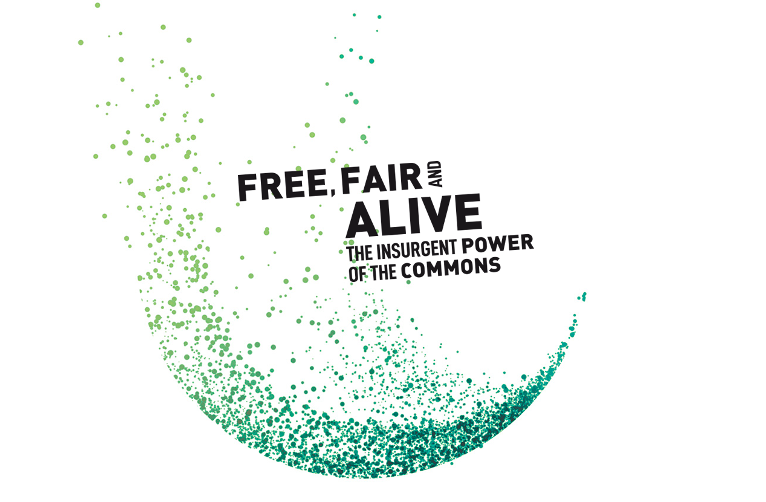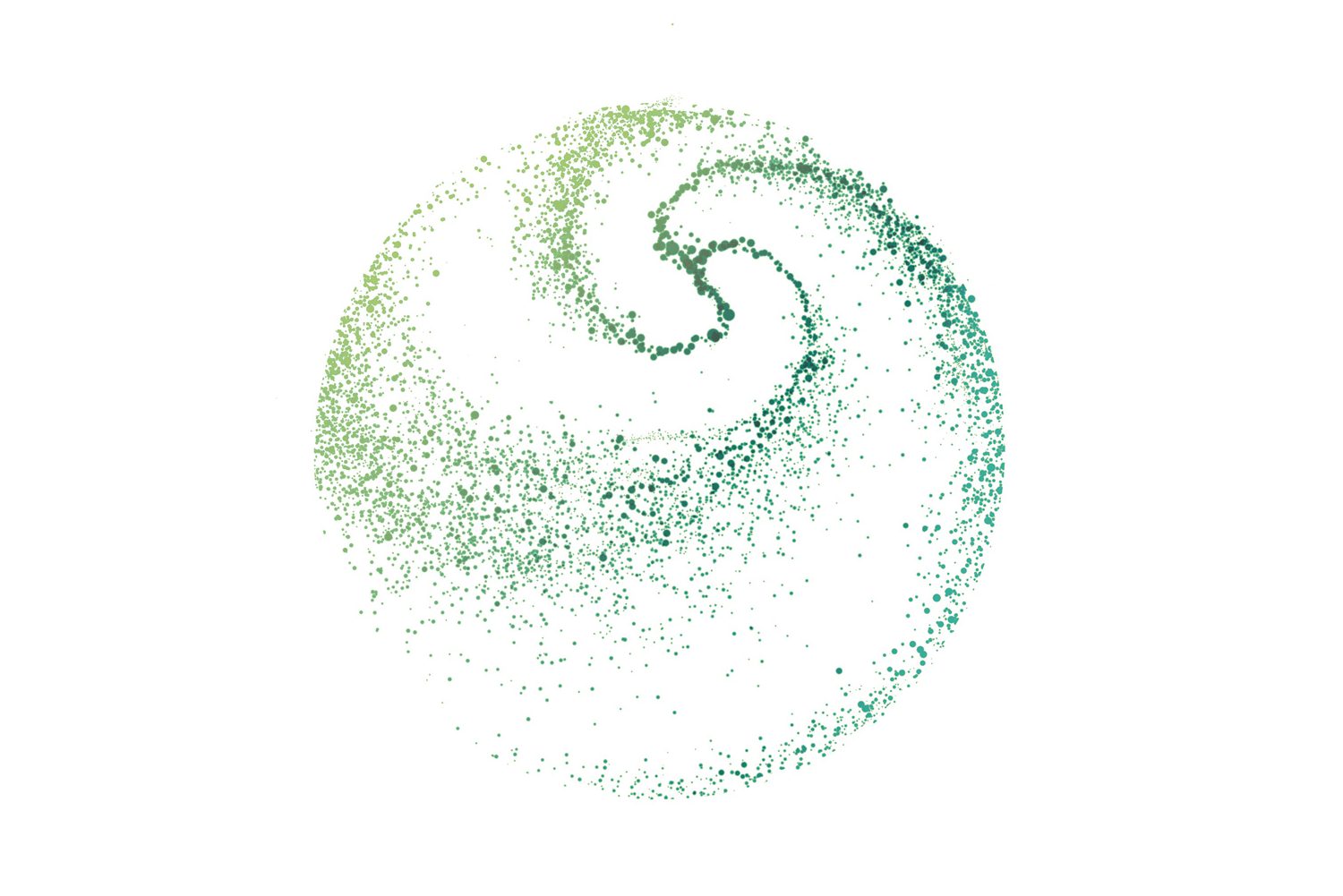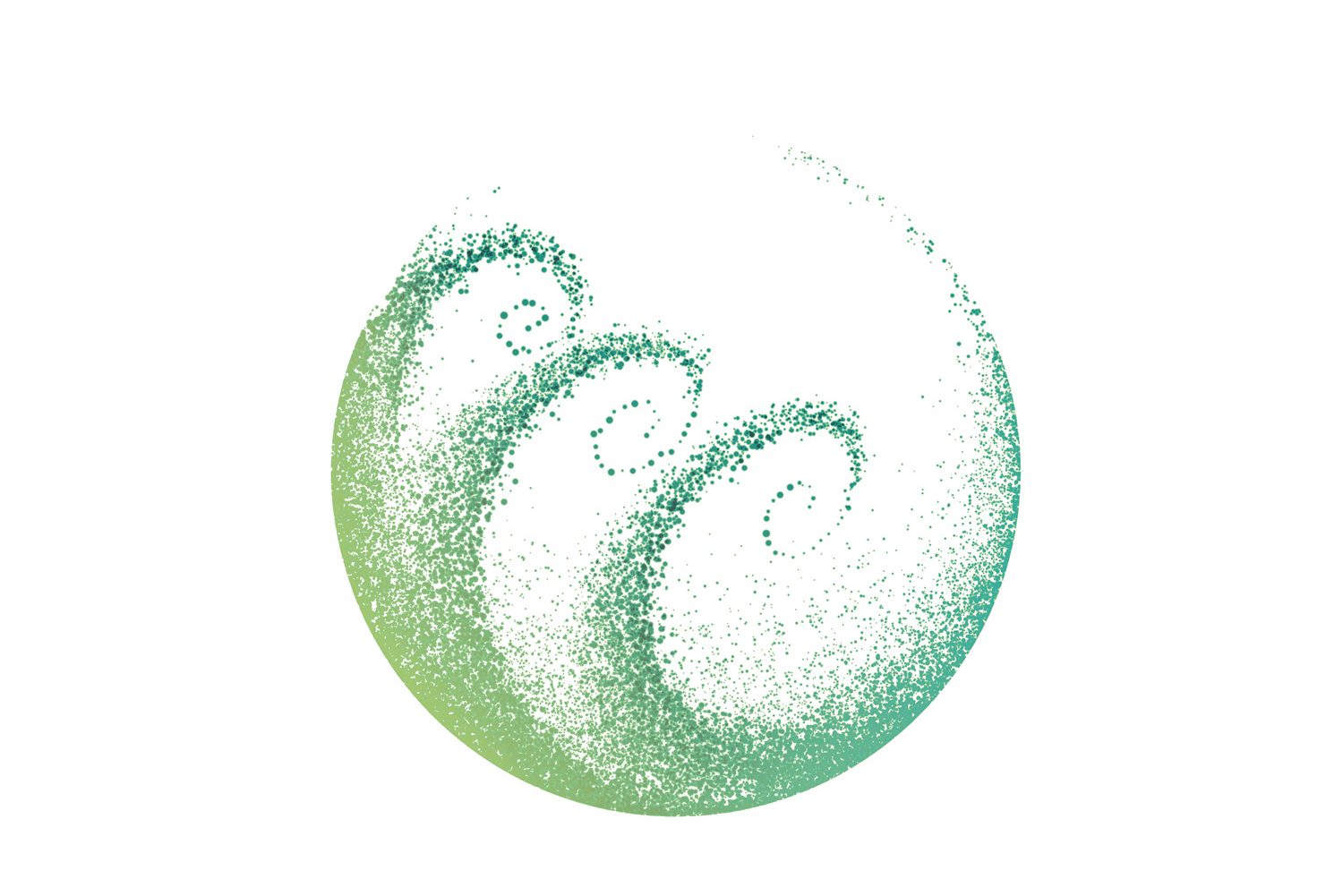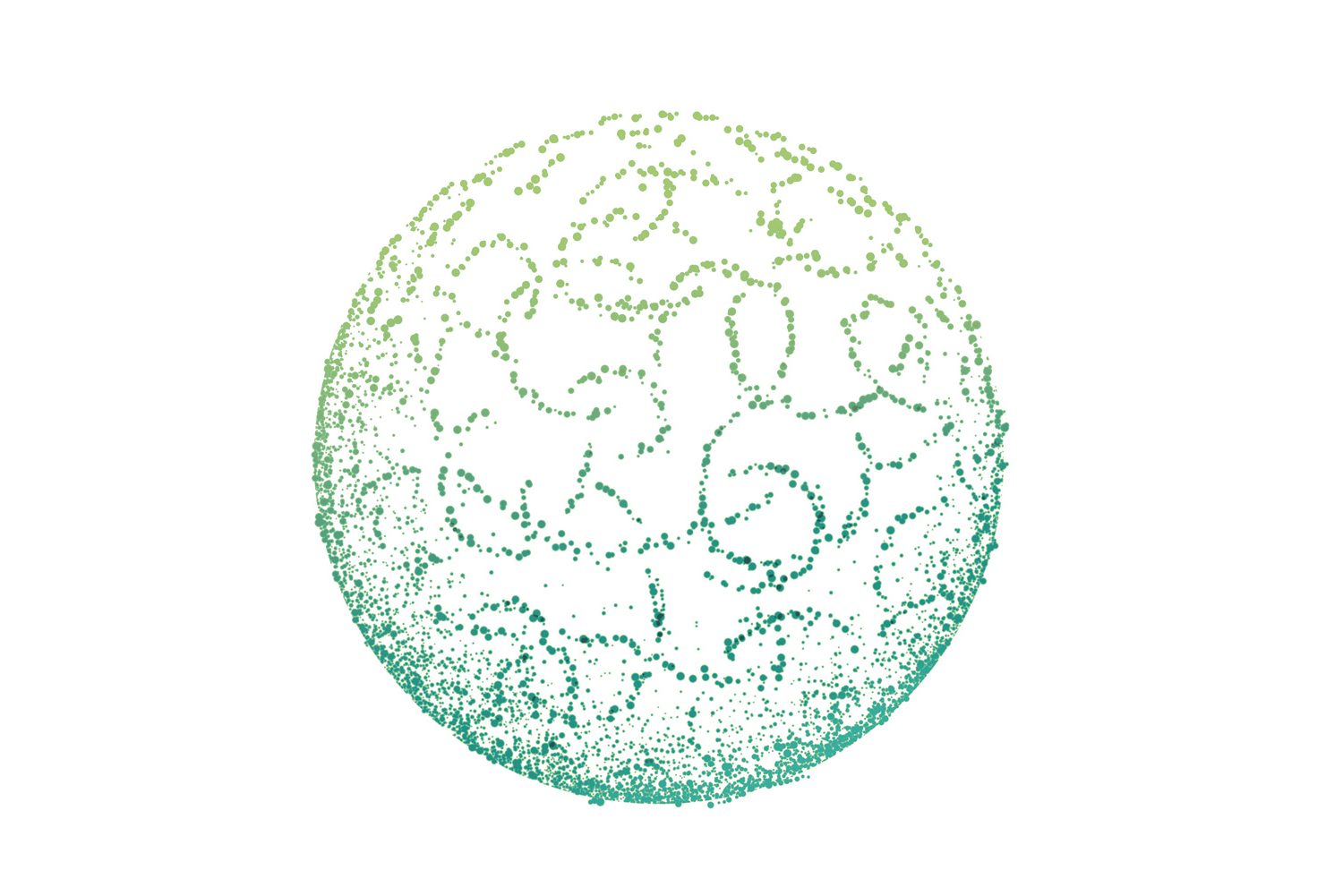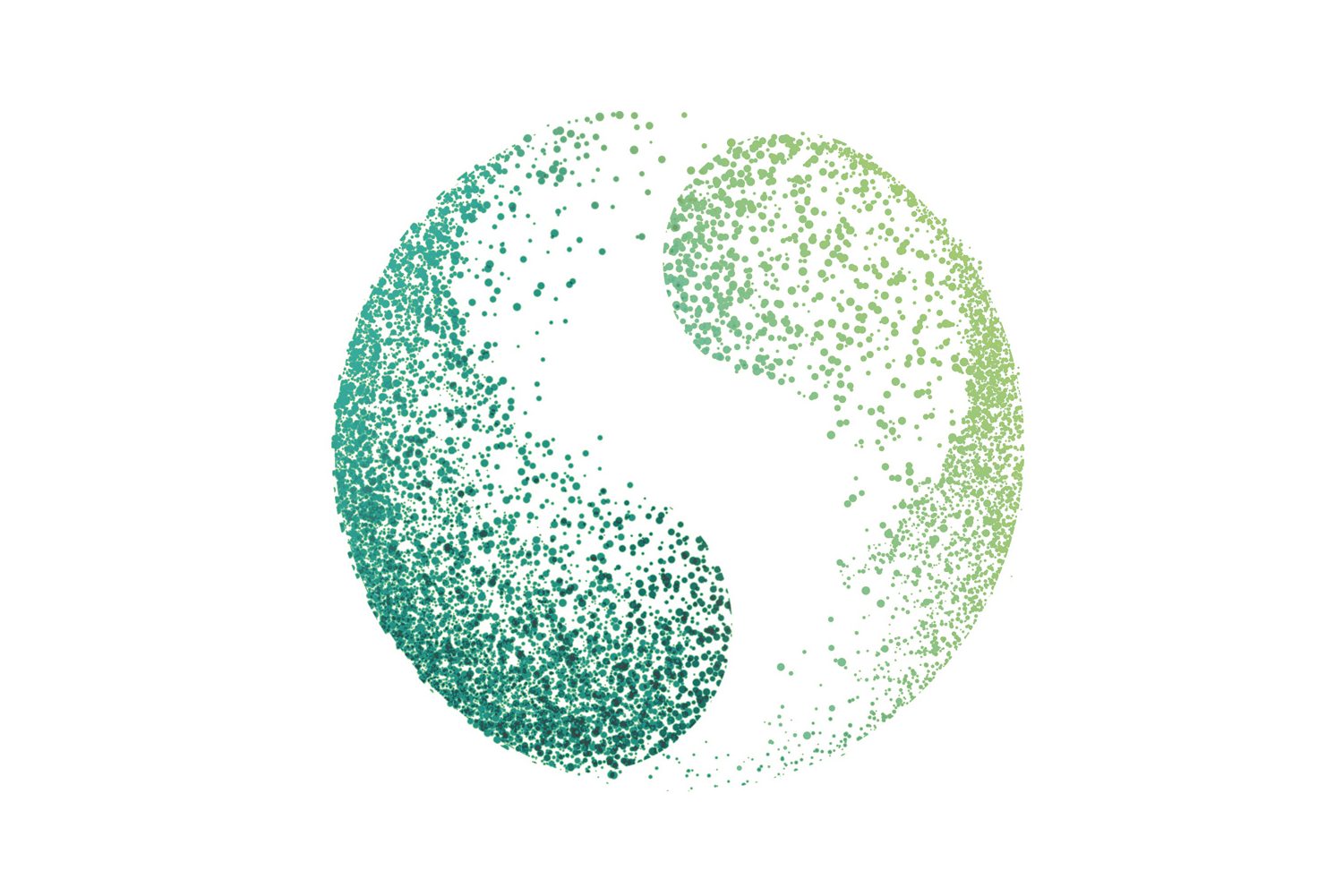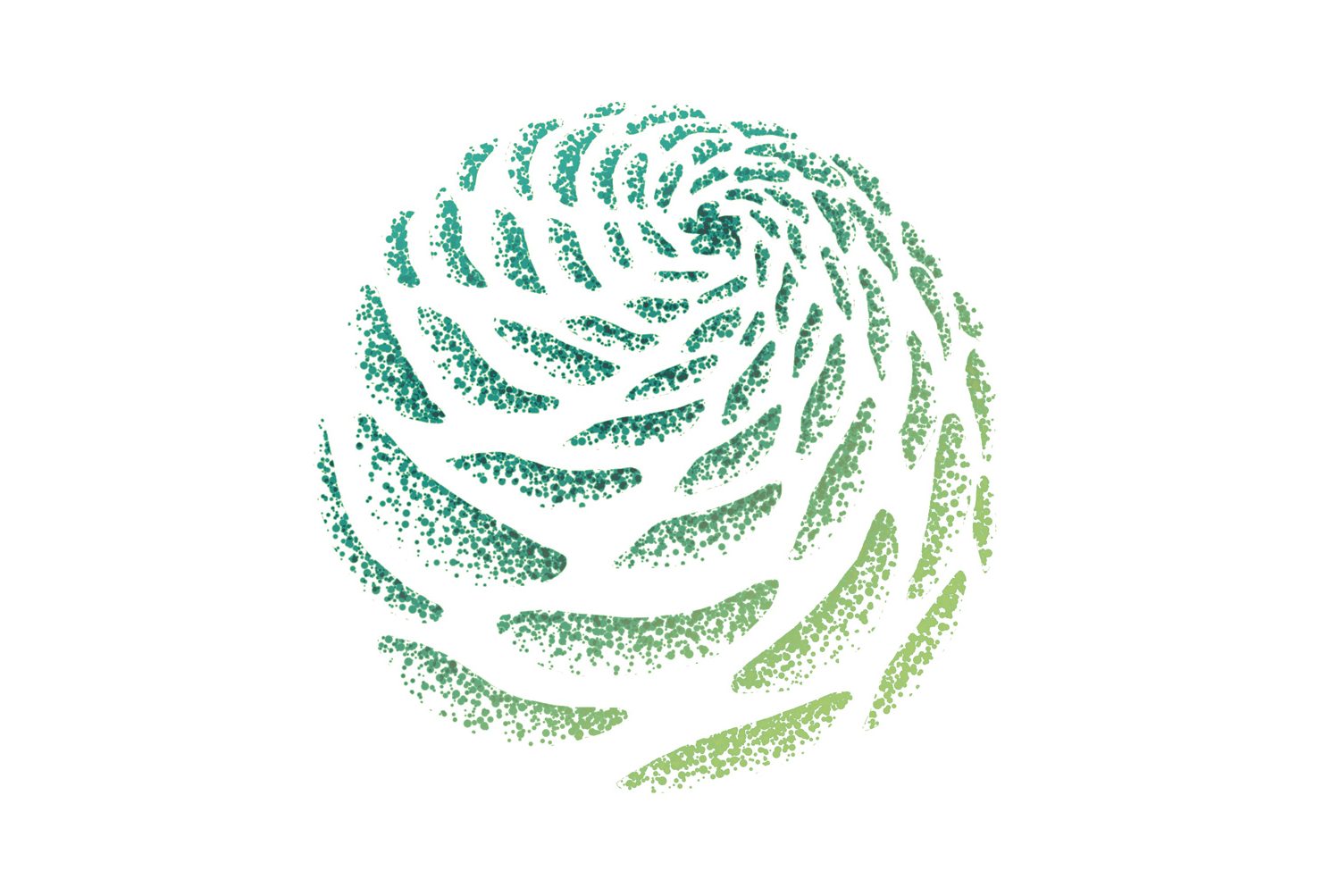 Ed. note: This is an excerpt from Free, Fair, and Alive: The Insurgent Power of the Commons, by Silke Helfrich and David Bollier. You can find out more about the book here.
Ed. note: This is an excerpt from Free, Fair, and Alive: The Insurgent Power of the Commons, by Silke Helfrich and David Bollier. You can find out more about the book here.
The Social Life of Commoning
The British sociologist Raymond Williams once wrote, “Culture is ordinary.” We could say much the same about commoning. It is terribly ordinary. Commoning is what common people decide for themselves in their specific circumstances if they want to get along with each other and produce as much wealth for everyone as possible. If commoning can be considered a way of life or a type of culture, then it provides what any culture must — “meaning both in a formal and in a deeply existential sense,” as art sociologist Pascal Gielen writes. Modern societies have largely forgotten about commoning. Therefore, showcasing its elemental dailyness opens the door for seeing how the commons can provide a platform for effective alternatives to capitalism.
We start our explorations with the Social Life of commoning because its motifs constitute the core of any commons while also manifesting in the two other spheres, Provisioning and Peer Governance. Over the course of more than fifteen years, we have visited dozens of commons, talked with hundreds of people, and read about scores of commons in the scholarly literature. We have come to see that commoning is not like an on/off switch, something that exists or it doesn’t. It is more a matter of intensity like a dimmer switch on a light; the intensity of various patterns of commoning may be weak or strong, according to what people really do, but its degree of illumination and continuity lead us to the threshold of conscious self-organization. This means that we have the capacity to affect the process — to intensify commoning — at any given moment.
People may or may not be self-aware about these patterns of Social Life. In Indigenous cultures, tradition and habit can make commoning seem utterly normal, rendering it invisible. In Western industrialized societies, commoning is invisible as well, but for a different reason: it has been culturally marginalized. That is why we have embarked upon our “archeological excavations” of commons around the world — to bring the little-discussed realities of commoning into the bright light of day.
It is important that people experiment with these patterns so that they can understand commoning better and develop new ways of living, provisioning, and governing themselves. The capacity to make change lies right before us, and is at once cultural, organizational, generative, and political, if we keep in mind the three spheres of the Triad. It can transform our economy and our political systems, our institutions and ourselves. As J.K. Gibson-Graham have written, “If to change ourselves is to change our worlds, and the relation is reciprocal, then the project of history making is never a distant one but always right here, on the borders of our sensing, thinking, feeling, moving bodies.” Politics ultimately originates in our subjectivity, say Gibson-Graham, and in “the sensational and gravitational experience of embodiment.”
Pascal Gielen refers to culture as “a stealth laboratory for new forms of life, an omnipresent incubator, hardly noticed precisely because it is everywhere.” The commons is such a laboratory. In modern times, market capitalism and its categories of thought have more or less mandated how we will behave, invest, organize institutions, and so forth, by presuming that human beings are basically selfish, materialistic, utility-maximizing individuals. No wonder commoning, with its different insights about human beings, is so often seen as strange. It has been eclipsed by the shiny cultural mindscape of modernity.
And yet, the way commoning catalyzes change is clear: the more you align yourself with a commons worldview and the more you practice commoning, the more you learn how to become a commoner. This, in turn, has sweeping ramifications for economics, politics, and culture. The patterns that comprise the Social Life of Commoning are specific forms of cooperation, sharing, and ways that people relate to each other. One could say that a commons arises when the patterns of Social Life reach a sufficient density of practice, threshold of self-organization, and continuity to express themselves as a coherent social institution.
- The Social Life of Commoning
- Cultivate Shared Purpose and Values
- Ritualize Togetherness
- Contribute Freely
- Practice Gentle Reciprocity
- Trust Situated Knowing
- Deepen Communion with Nature
- Preserve Relationships in Addressing Conflicts
- Reflect on Your Peer Governance
Cultivate Shared Purpose and Values
Shared purpose and values are the lifeblood of any commons. Without them, a commons loses its coherence and vitality. But shared purpose and values can only arise when people contribute from their own passion and commitment, connect with each other, and share certain experiences. A commons does not necessarily start with shared purpose and values. These outcomes must be earned by commoners over time as they struggle to bring their diverse perspectives into greater alignment. This is important because the sense of shared purpose in a commons can’t be formally imposed or declared. It must arise organically through meaningful commoning over time. A rooted culture cannot be built overnight.
Cultivate shared purpose and values
Just declaring shared purpose and values is like planting a tree and not watering it. Shared purpose and values need to be cultivated through collective reflection, traditions, celebrations, and participation in all kinds of activities. All this can help strengthen mutual commitments. To be sure, the formal design of organizations and infrastructures can help, but there is no substitute for commoning to align and deepen people’s concerns and values. This takes time.
At Next Barn Over — the CSA farm described in Chapter 1 — the commitment to fresh, organic local food is cultivated by hosting family dinners, inviting people to volunteer, suggesting recipes using seasonal vegetables, and reaching out to help needy neighborhoods. The best way to bring people together is to be authentic. Ideally, everyone should be able to contribute something they really enjoy doing. The most helpful question is not, what do we need? It is, what do we have? What is possible with what is available here and now? This is reflected in the poems that Next Barn Over occasionally sends to members, which included this one by Wendell Berry:
What We Need is Here
Geese appear high over us,
pass, and the sky closes. Abandon,
as in love or sleep, holds
them to their way, clear
in the ancient faith: what we need
is here. And we pray, not
for new earth or heaven, but to be
quiet in heart, and in eye,
clear. What we need is here.
Ritualize Togetherness
One of the most important ways to strengthen shared purpose and values is by ritualizing togetherness — meeting regularly, sharing deeply, cooking together, celebrating successes, candidly assessing failures. This is essential to building a culture of commoning and a shared identity.
The rituals of togetherness can be as simple as regular meetings or as complicated as the specialized practices of an agroecology commons. A fair amount of community fun and frolic is also required. The many farmers of Mexico, New Mexico, and Colorado who participate in acequia irrigation commons have learned over centuries to ritualize togetherness. Everyone is, of course, concerned about his or her own allotment of water, but everyone also works together to maintain the water ditches and track the ecological limits of water usage. Software hackers are renowned for their creative rituals such as hackathons to figure out how to solve software problems and invent jargon that is understood only by them. The Quechua overseeing the Potato Park in Peru are bound together through their spiritual values and practices, much as the religious practices of Indonesian subak rice farmers help them coordinate when to plant seeds and irrigate their fields without depleting finite waters.
Rituals tend to work best when they are woven into ordinary daily life, and are not treated as something separate and unusual. At Enspiral, a networked guild of several hundred participants, participants ritualize their group life through regular, in-person retreats. In many countries such as Greece, Italy, France, and Finland, regional festivals are a way that people have celebrated the ethic and accomplishments of commoning. What better way to Ritualize Togetherness than a party or festival, especially among strangers? Indeed, some commoners make a party out of everything. At the many open workshops of Konglomerat, in Dresden, Germany, when it’s time to clean shared rooms, workshops, machinery, and toilets, members put a “Putzival” on the group’s agenda. The term sounds cute, clean, and fun at once, because “putzig” (the adjective) means “cute” and “putzen” (the verb) means “to clean,” making it kind of a cute Cleanup Festival. People get the music on and have fun getting rid of dust and dirt.
Contribute Freely
Contribute freely means giving without expecting to receive anything of equivalent value, at least not here and now. It also means that when people do receive something, it is without feeling the need to reciprocate in direct ways. Wherever we contribute freely, the use of quid pro quos is minimized and the potential for sharing and dividing up is enhanced. Such acts occur when community gardeners break ground in the spring, or when people submit editorial content to Wikipedia with no expectation of return or even formal credit. They just do it, for a variety of reasons — to learn a skill, join a community, earn respect, build job credentials, or simply to be part of something. By contributing freely, people also get back something they really enjoy, like the flowers from a community garden or the food grown there. People contribute freely when they give money to crowdfunding campaigns, volunteer their physical labor to maintain hiking trails, or organize neighborhood events. The giving is its own reward.
It is important not to make overly broad claims about how to contribute freely in a commons because so much is situational. As long as a person’s contribution is not coerced, everything is fine. There cannot be an even-steven calculation or strict reciprocity at work, even though that is always a temptation. And yet, it is intriguing that a freely given contribution often comes back to the giver, somehow, somewhere. In his classic book The Gift, Lewis Hyde explores the spiritual and emotional significance of gift exchange as revealed in diverse cultures, anthropology, and literature. Explaining the difference between “circular giving” and reciprocal giving, Hyde writes:
When I give to someone from whom I do not receive (and yet I do receive elsewhere), it is as if the gift goes around a corner before it comes back. I have to give blindly. And I will feel a sort of blind gratitude as well … When the gift moves in a circle its motion is beyond the control of the personal ego, and so each bearer must be a part of the group and each donation is an act of social faith.
The idea to Contribute Freely is not a matter of unconditional, perpetual giving, however. Nor is it not necessarily circular. But if the goal is to contribute to a resilient commons, gift-givers need to make sure that their contributions are voluntary and commonly agreed upon, and not induced by pressure or sanctions from the outside. A commons won’t survive without freely given contributions. The specific ways of contributing to the common pool — where? when? how? in what quantities? — depend first and foremost on what people can really give. This in turn reflects their socioeconomic situation, customary rules, the level of people’s commitment, how they feel about a certain process, trust in decision-making processes, levels of participation, and so on. Of course, giving can also be simply an expression of goodwill or joy, or support for a cause.
To Contribute Freely helps build a healthy commons because it affirms the ethical norm of sharing, dividing up, and freely cooperating. A strict accounting of who gives what to whom may be helpful, but it is not always needed. While an accounting may work in larger and less personal contexts, a sharp focus on precise contributions and entitlements can undermine what makes a commons special: it’s a space where money doesn’t rule everything.
Practice Gentle Reciprocity
While commons surely need people to Contribute Freely, they are not a fairy tale land of self-sacrificing volunteers. There is also social exchange based on some form of reciprocity between persons. But the reciprocity in a commons is of a different character than that of trade in markets. Markets are based on individuals bargaining to extract as much as possible for themselves when making exchanges of equivalent monetary value (price).
Practice gentle reciprocity
What matters is the feeling of fairness, which is not necessarily the same as providing absolutely equal shares or equivalent money-value exchange to everyone. Fairness is about ensuring that all needs have been seen and met. A self-confident, gracious commons is thus one that is content with social equals enjoying a roughly balanced (but not absolutely equal) exchange over time. Choosing to not calculate in precise terms who owes whom is the practice of gentle reciprocity. It is often a matter of social wisdom and tolerance. Practicing strict, direct reciprocity by identifying people as debtors or creditors in the first place can create invidious social distinctions and fan divisive jealousies. Yet allowing free riders to shirk their fair contribution to a group’s efforts can generate resentments and deplete the group’s shared wealth and goodwill. “No one wants to be a sucker, keeping a promise that everyone else is breaking,” as Professor Elinor Ostrom once wrote.5 So a commons must ensure a rough equivalence of contribution and entitlement among its participants without insisting upon fully audited reciprocity and without coercing contributions.
Trust Situated Knowing
People who are able to ride a bicycle, play the piano, or run a marathon often cannot explain how they do it. They don’t consciously know what they know. That’s because much of our knowledge is tacit or embodied, and not necessarily conscious and cognitive. “We can know more than we can tell,” as Michael Polanyi puts it in his books on this subject.6 Our bodies often know different things than our conscious minds. We feel the arrival of spring, sense when something is amiss in a social setting, and relax when we visit beloved bodies of water. It is fair to say that commoning begins with these deep reservoirs of embodied and situated knowing and perception.
Trust situated knowing
Political scientist Frank Fischer has documented the habit of professional experts and bureaucracies to “ignore local knowledge that can help relate technical facts and social values.”7 A number of movements and organizations are actively trying to change this by calling attention to the deep wisdom of situated knowing. Permaculture designers insist on the necessity to “observe and interact” and to “creatively use and respond to change,” for example.8 People in the Transition Town movement take pride in co-creating a post-fossil world through “mind, heart and hand.”
Embodied experience opens up a very different way of understanding how to govern people and shared resources, going well beyond cognitive, behavioralist approaches. It points to other ways of knowing — intuition, feelings, subconscious knowledge, historical experience. Just as the physical human body somehow gives rise to consciousness, so the coming together of an I and we yields a new sphere of group consciousness that is best known through experience, not language. Anthropologist James Suzman described how he puzzled over the meaning of the term n!ow as used by the Ju/’hoansi Bushmen in southern Africa. The term seems to refer to a fundamental property of people and meat animals that manifests itself in the weather whenever such animals are killed or when a human is born or dies. But after failing to entirely grasp the elusive idea expressed by n!ow, Suzman concluded that some experiential and embodied knowledge simply cannot be expressed through language, let alone be translated into another language: “To know n!ow and understand it, you have to have been a product of this land, to have been shaped by its seasonal rhythms, and to have experienced the bonds that formed between hunters and their prey.”9
Our feelings are exquisitely sensitive to changes in the living natural world and our social relationships. In her book Tending the Wild, M. Kat Anderson shows how Native Americans in the area now known as California developed an astonishingly subtle knowledge of their local ecosystems and the lives of specific plant and animal species: “Several important insights were revealed to me as I walked with Native American elders and accompanied them on plant gathering walks. The first of these was that one gains respect for nature by using it judiciously. By using a plant or an animal, interacting with it where it lives, and tying your well-being to its existence, you can be intimate with it and understand it.”10
Situated knowing is obviously not confined to traditional peoples. Such forms of knowing and know-how are found among mountaineers assessing the safety of ice sheets, athletes sensing where and how rapidly the ball is traveling, and politicians sensing the public mood. Situated knowing is especially important in commons, where people often have subtle insights about their care-wealth. Indeed, this is what makes so many commons so vital and robust. Situated knowing, then, is not just “knowledge.” It is an outgrowth of doing and experience — including, often, deeper communion with nature and affective labor in stewarding it. Philosopher Donna Haraway has famously described situated knowledge as a “feminist empiricism” in the course of challenging the ideas of scientific “objectivity.”11
Despite the overwhelming power of scientific rationalism, often leveraged by bureaucratic administration, it remains possible to honor situated knowledge and apply it. It is, in any case, within us and omnipresent around us, but not readily recognized and trusted.
Deepen Communion with Nature
The great appeal of many commons is their invitation — often, in fact, a necessity — to bring people into closer communion with nature. In commons that revolve around natural biowealth — water, farmland, forests, fisheries, wild game — people quickly realize that there are natural limits. People involved in agroecology, permaculture, community forests, and traditional irrigation become closely attuned to the rhythms of natural systems and the subtle indicators of their health or endangerment.
In commons, people are not focused on the exchange value or financialization of so-called natural capital. The more they engage directly with nature, the more commoners develop intimate relationships of respect and understanding for the Earth as an elegant, sacred, living system. Commons give people practical vehicles for deepening their engagement with nature. When M. Kat Anderson asked native elders in California why some plants and animals were disappearing, they blamed “the absence of human interaction with a plant or an animal.” They suggested that people need an active relationship with plants because “not only do plants benefit from human use, but some may actually depend on humans using them. The conservation of endangered species and the restoration of historic ecosystems might require the reintroduction of careful human stewardship rather than simple hands-off preservation.”12 Indigenous wisdom suggests that human beings must interact with nature as consciously helpful users, protectors, and stewards. This idea is finding its way into some state policies. In Guatemala, the government had long attempted to stop cattle ranchers, farmers, illegal loggers, and drug traffickers from destroying lands in the Maya Biosphere Reserve. After concluding that it could not stop such behaviors, the government realized that “the most effective way to protect forests is to give control of them to the communities who already live there.”13
The same thing happened in Nepal, where community participation in the management of forests greatly improved ecological stewardship. Following the reintroduction of a multiparty system in Nepal in 1990, new policies and funding mechanisms were created to support grassroots-based, self-governing groups. In all, some 16,000 community forest user groups are now managing 1.2 million hectares of land, or about one fourth of Nepal’s forested areas.14
The point is not simply to develop economic or government policies that are more “sustainable.” The point is for people to have opportunities to deepen their relationships to natural systems, and in so doing, come to know them, love them, and protect them. This is the seed from which grows the structured situated knowing of permaculture and ecomimicry in design,15 among many other eco-friendly innovations. It is the “spell of the sensuous,” in David Abrams’s phrase, that pulls us toward a deeper understanding of the nature and ourselves.16 Ecophilosopher Andreas Weber argues our connections to nature are so deep and existential that our inner lives and feelings bear the imprint of the outer world. Living organisms experience themselves as physical matter via their emotions, which is part of a larger drama of biopoetic relationships among living creatures. “We are of the same stuff” as the world, writes Weber, which is why a walk through a meadow or the arrival of spring causes such delight.17 Deepening our communion with nature is an indispensable path toward responsible care of the teeming, living world that lies beyond humanity.
Preserve Relationships in Addressing Conflicts
Any cooperative endeavor will face serious challenges, many of them stemming from personal behaviors or power relations. The question is not if, but how the inevitable conflicts that arise will be dealt with. Ignoring them is not an option. What we mean by “preserving relationships” in addressing conflicts might be best explained by drawing on Elinor Ostrom’s insights.

Preserve relationships in addressing conflicts
Like any institution, a commons must have rules and norms that apply to everyone. But what also matters a great deal is how those rules and norms are upheld. There must be an honest, transparent reckoning of conflict or violation, but also a spirit of respect and concern for all the people involved. In some contexts people are not able to leave, which makes it a priority to try to preserve relationships while addressing conflicts. Hence the use of graduated sanctions, one of the eight design principles for commons identified by Elinor Ostrom. (See Appendix D.) It is important to recognize and rectify the harm, but also to honor the dignity of the person involved and their relationships with fellow commoners. Relationships can also be preserved when group complicity or systemic problems are acknowledged. The idea is not to secure consensus through threats of punishment, but to prevent misaligned relationships in the first place. When transgressions do occur, it is important to mete out sanctions in gradually increasing severity, all in a context of trust, candor, and honesty. A frequent technique is to sit in a circle and discuss a problematic situation or behavior. (We have seen effective deliberations in circles with more than one hundred people.) The art is to give everyone the right to be heard, bear witness, and suggest changes while sharing the observed problem and its implications transparently.
When one of us observed a large circle of members of the Venezuelan federation of cooperatives, Cecosesola, she was perplexed at how complaints against people were often commingled with affection, with meetings concluding by people hugging the “accused.” After what seemed to be a more than challenging session involving deep emotions and interpersonal conflicts, the expression of respect and conspicuous displays of hugs signaled that deep, honest criticism is linked to enduring respect and care. Other commons may use mediation or other forms of group deliberation. Many software commons have a choice that may or may not preserve relationships while addressing a dispute — the practice of “forking the code,” which in effect splits the project into separate endeavors. One or several participants to leave but still work on the same base of software code and take it in different creative directions. Of course, not all conflicts can be bridged. At some point, forking a project or excluding a person may be the only practical option. What always matters, though, is striving to maintain collective morale while being unflinchingly honest. Denial and self-deception don’t help anyone.
Reflect on Your Peer Governance
In many commons people are not fully aware of their own practices. The underlying values and social dynamics — both the constructive ones and the less helpful ones — may be only dimly perceived. This makes a commons vulnerable. Even engaged people may forget how to maintain themselves as a commons in the face of daily operational challenges, the necessity (and seductions) of making money, the enticements of wielding power, new ideas about organizational governance, and countless other factors. It is therefore vital that commoners reflect on their peer governance. That is the only way that they can protect the integrity of the commons against enclosure, cooptation, or the entropy that can sap institutions of their energy.

Reflect on your peer governance
We include this pattern, Reflect on Your Peer Governance, as part of the Social Life of Commoning and not as an issue of Peer Governance, because we regard it as a foundational necessity. German economist and commons scholar Johannes Euler has pointed out that just as there is no commons without commoning, so there is no commoning without peer governance. If you want your commons to survive decades or even centuries, governance behaviors must be made explicit and honestly discussed. Unself-conscious forms of commoning risk losing their way. Unless a group has centuries of tradition, culture, and ritual to act as stabilizing forces, its members must consciously reflect upon the processes that make a commons work or that could make it better.
* * *
In the end, commoning is not just a state of enhanced awareness and being, like Zen practice or mindfulness. It is an enactment of peer provisioning and peer governance. It is the condition and means by which those occur. We might add that it is the cultural form of a new kind of politics. At its most ambitious, commoning begins a process of re-imagining the terms of modern human civilization at a time when its idealized notion of human aspiration, homo economicus, is revealing itself to be profoundly antisocial, indifferent to democratic norms, and ecologically irresponsible.
This is why a vital aspect of the Social Life of Commoning is the idea of strengthening the Nested-I. This is not a pattern as such, because it represents what happens more generally when other patterns of commoning are enacted: our individual and collective interests converge and align! We enter into a symbiosis among individual beings and our larger context. Participants in the WikiHouse network enact the Nested-I as they share and make shareable their design innovations with each other. The use of open standards and modularity encourages anyone to contribute freely in building something bigger than themselves, while reaping individual benefits in the process. The idea of the Nested-I also animates federated wikis, which vest individuals with the autonomy to create personal wikis to suit their own tastes and points of view, while inscribing such wikis within larger federations (known as “neighborhoods”) to allow the easy sharing of wiki pages (see pp. 246–252).
The reality of the Nested-I is arguably that of the human species even if conventional economics continues to believe in the isolated-I as a sovereign, rational agent. What economics fails to comprehend is the biophysical absurdity of this foundational premise. Living beings are deeply and dynamically interconnected. Even Western medicine’s fixation on single-agent pathogens that supposedly have a cause/effect relationship with our bodies, is giving way to a more complicated story. Increasingly scientists are discovering that individual living systems are nested within larger living systems while at the same time being comprised of smaller living elements. It’s holism all the way up and down! The Human Microbiome Project has identified about 100 trillion nonhuman life forms — bacteria, fungi, etc. — that live within our bodies, especially in our digestive tract, taking up between two and five pounds of our body weight. It turns out that these organisms are essential to our health and well-being as “individuals.” One might say that our individual bodies don’t even have definitive boundaries; we are immersed in all sorts of symbiotic relationships to the food we eat, the bacteria around and within us, and the local landscape. In short, the Nested-I has a more than human dimension. We literally blur into a network of other living organisms and systems.18
This is what the idea of the Nested-I and its Ubuntu Rationality expresses: an individual’s actions not only serve his or her own interests, they are part of a larger, more intricate symphony of negotiation and change with other living beings in a living Earth. It bears noting that while this impulse to work with our fellow commoners may have elements of conscious choice, it is a fundamentally nonrational, embodied instinct as well. Strengthening the Nested-I means developing the space to express affection, respect, laughter, playfulness, passion, and love in the mundane chores of teamwork and ritualized togetherness that any commons must honor.19
It is also worth noting that a commons can get the mix of collective control and individualism wrong. A group may exert a suffocating presence on the individual, or on certain types of individuals. Patriarchy is a problem in many subsistence and digital commons despite women’s significant role in commoning. A coercive conformism can quickly turn a community into a cult. Charismatic leaders may get things done by consolidating power, but at the cost of a weaker, less robust culture. Nourishing the Nested-I requires an artful, respectful balance between the needs of the individual and the imperatives of the group.


